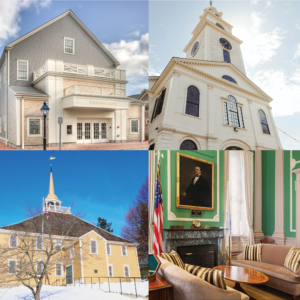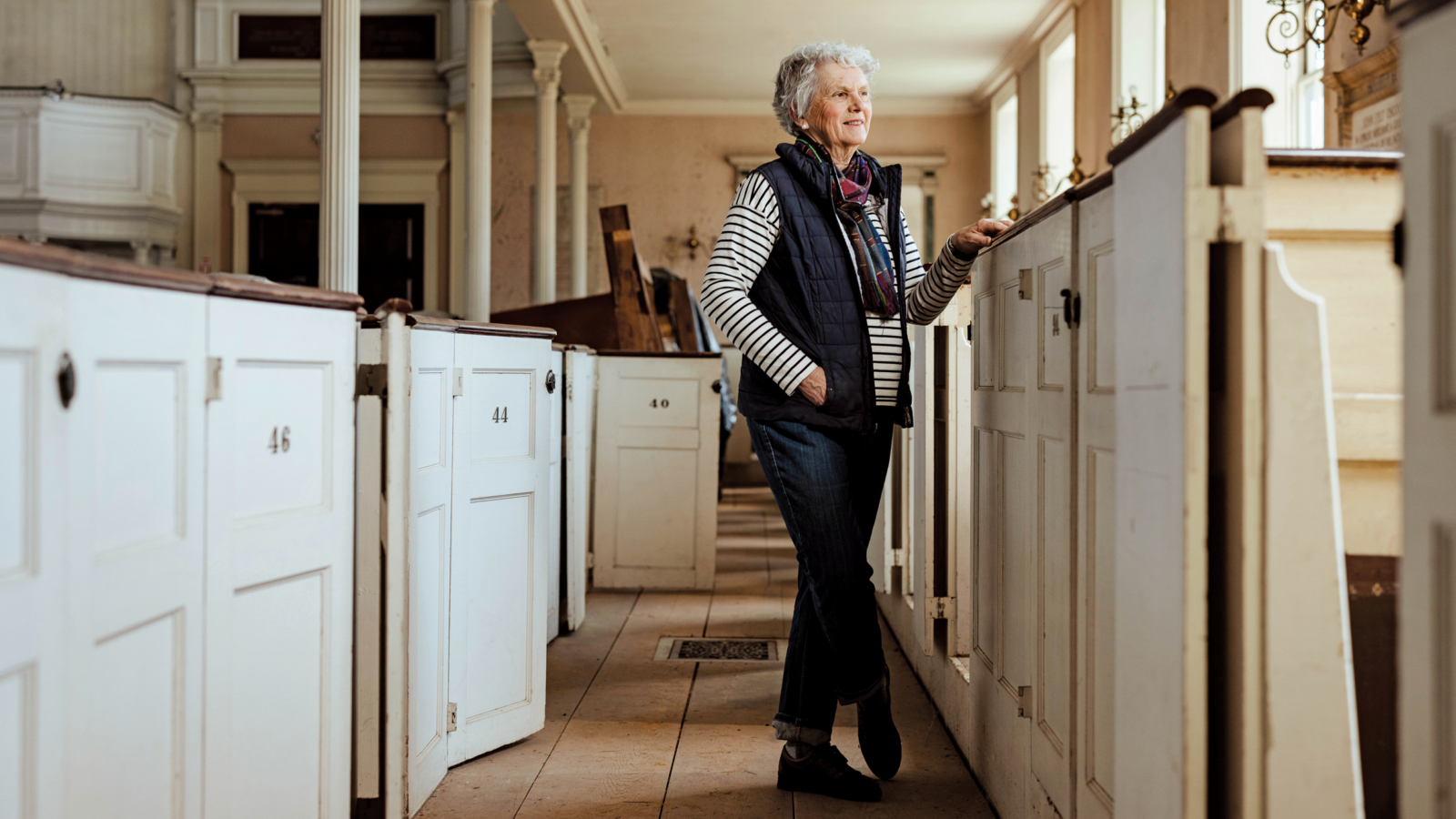Architectural conservator Andrea Madsen Gilmore ’70 preserves old buildings
Early in her acclaimed career, architectural conservator Andrea Madsen Gilmore ’70 was tasked with documenting the architectural history of Lindenwald, the Kinderhook, New York, home of Martin Van Buren, which recently had been acquired by her employer, the National Park Service. As luck would have it, the eighth president was a bit of a remodeler, which had the unintended result of preserving evidence of decorative finishes that could be positively dated to Van Buren’s residence. “All we had to do was pop off door casings, for example, and we could identify, and then reproduce, the wallpapers that were in the house when he lived there,” she recalls.
The thrill of making such discoveries—and uncovering the often-forgotten stories behind them—has inspired Gilmore over her 30 years as an architectural conservator. Retired since 2015 from Building Conservation Associates, the national consulting firm she joined in 1994 and helped direct, she continues to offer her expertise as a volunteer, most recently on the restoration of a landmark church in Roxbury, Massachusetts, and as a member of the Historic Districts Commission in her hometown of Dedham. Her list of restorations now runs into the hundreds, and includes dozens of projects that have won awards from preservation organizations. “Part of the joy of doing this is we had so much fun looking at these things and figuring them out,” Gilmore notes. “It’s kind of a puzzle, it’s kind of a game. The physical evidence is sometimes a little bit hidden, but it’s there nonetheless, if you know how to look at it.”
Gilmore’s fascination with historic buildings dates back to her college days. During her junior year abroad from Carleton College, she and her future husband explored the architectural treasures of England and Europe. Having been a standout student at Northampton School for Girls, the recipient of the prestigious White Blazer (which she preserved for 42 years and donated to Williston Northampton’s archives in 2012), Gilmore would later earn her master’s in historic preservation from Columbia University and serve as an adjunct professor in Boston University’s Historic Preservation Program.
After her retirement, Gilmore was honored with several lifetime-achievement awards from state and local preservation organizations, including the Boston Preservation Alliance’s 2019 Codman Award. “As a leader in the preservation community and an inspiration for women in preservation trades,” the group said, “Andrea’s contributions throughout her career leave a legacy through the places she’s preserved, the students she’s mentored, and the colleagues she’s inspired.”
We asked Gilmore to tell us more about some of her favorite projects and discoveries over the years.

Old Ship Meeting House, Hingham
Gilmore and her team made a number of discoveries at this National Historic Landmark, most notably uncovering the original 1681 exterior doors, hidden within a wall. “They’re really one of the most remarkable discoveries of my career,” she says. “Honestly, they’re one of the most remarkable discoveries architecturally for anyone, because I think it’s safe to say they are the oldest surviving exterior doors hanging in their original opening that have been found in America. That’s the kind of stuff that just makes me wildly interested and enthusiastic about preserving old buildings.” The team also found the cutouts for the building’s original casement windows. (Photo at bottom left)
The Dreamland Theater, Nantucket
This structure, which began as a Quaker meetinghouse in 1832, “had so many different lives,” says Gilmore, who researched its unusual history. After being moved down Main Street to a new location, the building was later floated across Nantucket Harbor to Brant Point, where it became part of a hotel. When the hotel was later enlarged, the core of the building was disassembled and floated back across the harbor in 1906 to become the Dreamland Theater. “Moving houses in the 19th century was tremendously popular,” Gilmore explains. “It was largely out of necessity, but it was a little bit easier because there were no telephone wires.” Plus, she notes, labor was cheap, “and there’s not much to do in the winter on Nantucket.” (Photo at top left)
First Church, Roxbury
Working with the Unitarian Universalist Urban Ministry, a local social justice organization, Gilmore has been helping adapt this old meetinghouse into a community gathering space, a project that reflects Gilmore’s interest in working on preservation projects in underserved communities. Among the noteworthy discoveries: determining why half the wall sconces were not working. “Someone asked me early on, Andrea, why don’t all those lights come on? I said, ‘because they’re gas.’” When the fixtures were installed in the 1880s, neither electricity nor gas was considered reliable, so the builders hedged their bet. “Going down the walls, one fixture is gas, one is electric. And they all survived. No one had ever taken these light fixtures out, and now they will all be electrified and restored.” (Photo at top right)
Massachusetts State House, Governor’s Office, Boston
Working with colleague Brian Powell, Gilmore was able to identify the paint colors chosen by architect Charles Bulfinch in the original design for the governor’s office—a vibrant green with a cream-colored trim. In this project, those original colors were painted over the more traditional blue and white that had long been in place. Charlie Baker, the current Governor of Massachusetts, has enjoyed this restored paint scheme and its complementary furnishings—and recognizes the importance of the accurate restoration of this landmark interior space. (Photo at bottom right)

